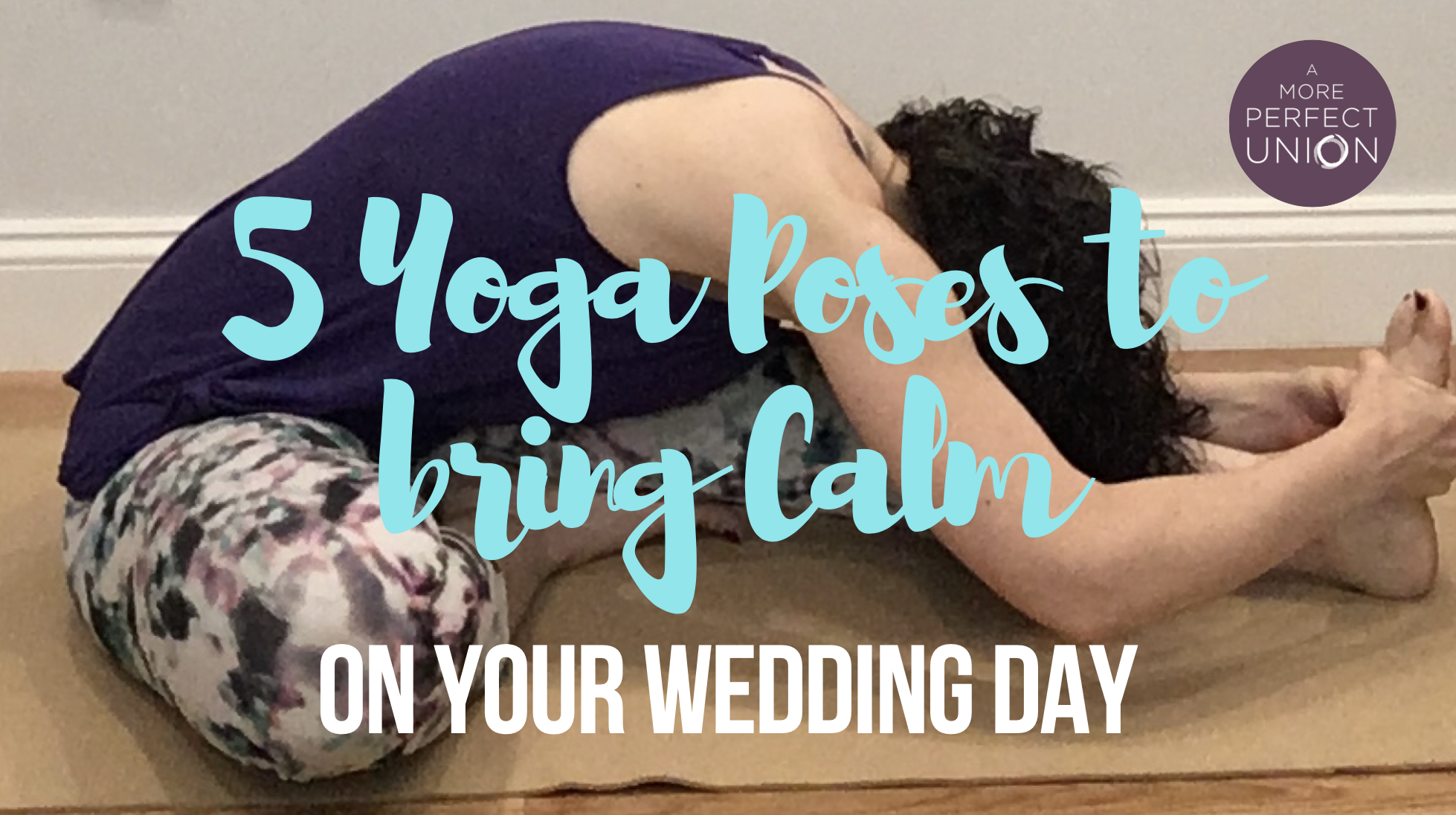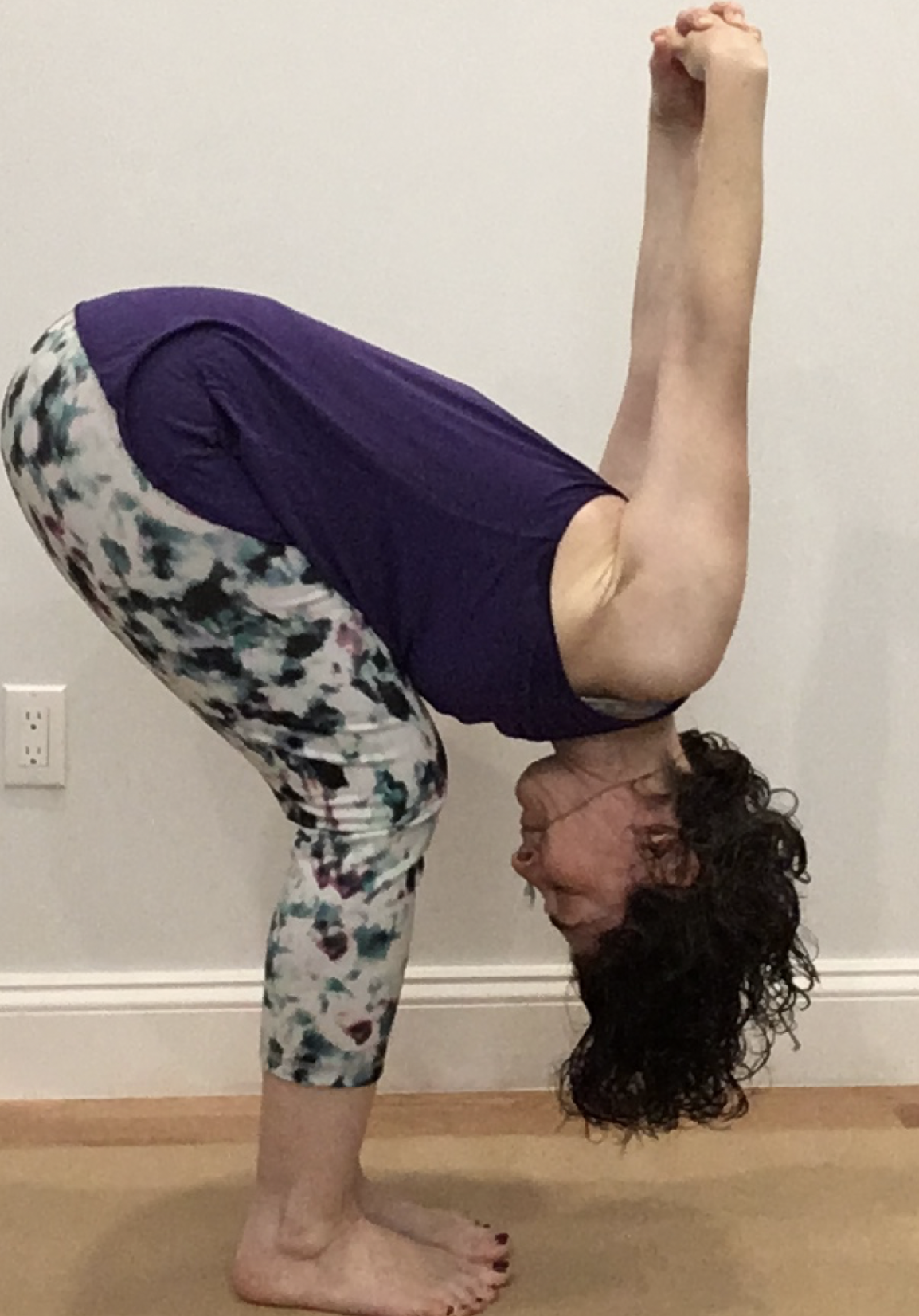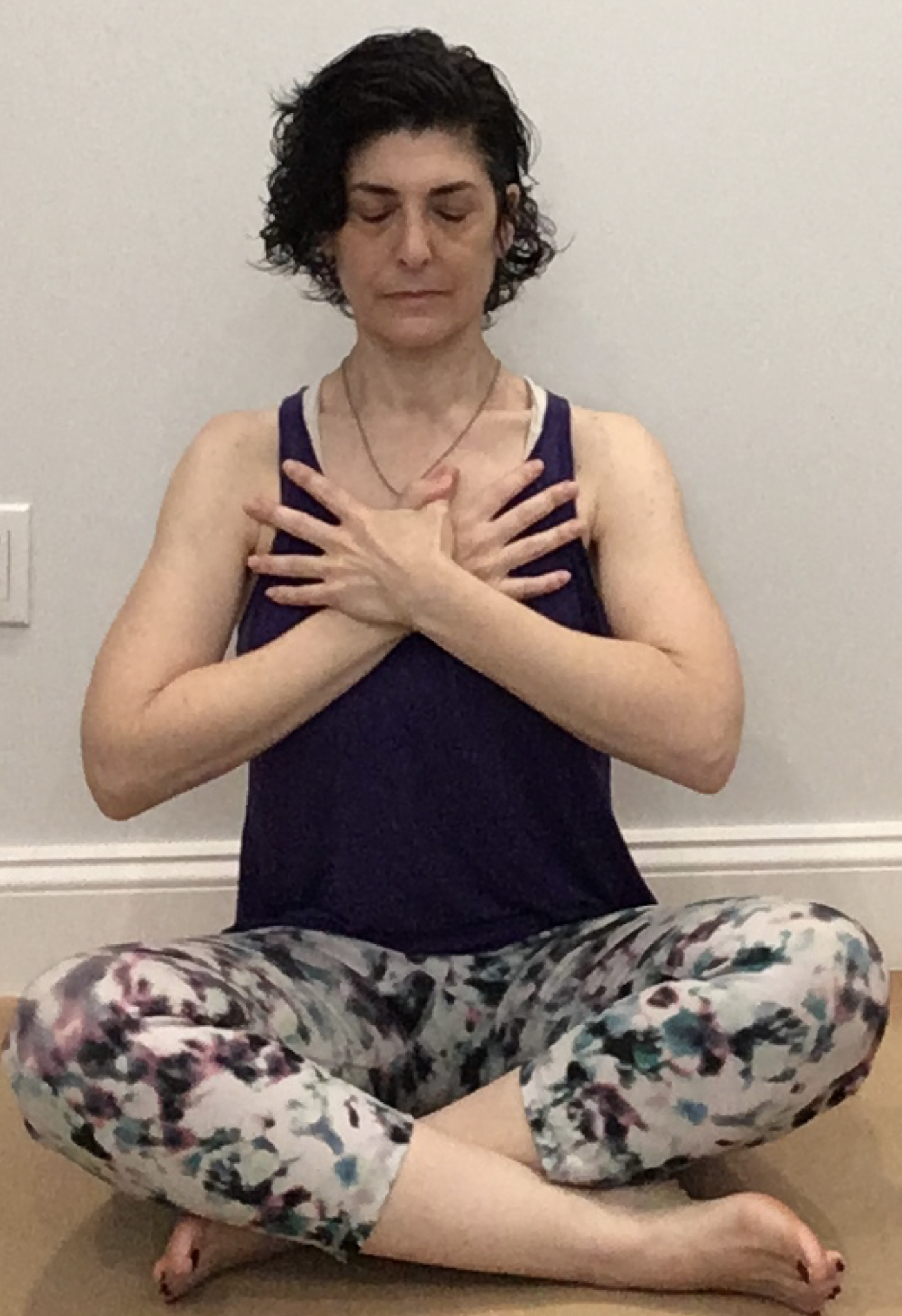5 Yoga Poses to Bring Calm on Your Wedding Day
It's important to take time on the morning of your wedding to calm the mind and center the body. This will allow you to release stress and better enjoy the day! Yoga is great for that. Here are 5 yoga poses that counter all of the wedding day jitters. All of them aim to release anxiety in the body and the mind. Feel free to do them by yourself, or grab your partner or some of your friends and do them together.
Balasana
Child's Pose is yoga's most important resting posture and it is a nice way to gently stretch various parts of your body. This asana gets its name from the Sanskrit words ‘bala’ which means child and ‘asana’ meaning pose. It's a chance to stop what you are doing, reassess your position, reconnect with your breath, and prepare yourself to move forward. I mean, what’s not to love!
Kneel on the floor, then separate your knees about as wide as your hips. Exhale and lay your torso down between your thighs. Lengthen your tailbone away from the back of the pelvis while you lift the base of your skull away from the back of your neck. Your choice if you want to lengthen your arms on the mat in front of you, or bring your hands to your feet, and give them a little massage!
Benefits
Relieves back and neck pain when done with head and torso supported
Gently stretches the low back, hips, thighs, knees, and ankles
Increases blood circulation to your head, which may relieve headaches
Sasangasana
Rabbit pose—alternately called hare headstand is an asana that evokes nostalgia for childhood playfulness. In Sanskrit the moon is called sasanga, “having the marks of a hare.” If we were to look closely at the moon, perhaps we could find a rabbit-like shadow, and the curled roundness of this pose reflects both moon and rabbit in shape.
This pose is part of the Bikram sequence. With this near-inversion because of its controlled stretch of the neck and upper spine, there’s a relaxing effect on the nervous system. Some people even find that practicing rabbit regularly helps them to fall asleep more easily, be an effective aid for relieving sinus problems and head colds.
From Child pose, hold onto the heels with the hands and pull the forehead in towards the knees with the top of the head on the floor. Holding tightly onto the heels, inhale and lift the hips up towards the ceiling. Roll onto the crown of the head and press the forehead as close to the knees as possible.
Benefits
Lengthens the spine
Stretches the shoulders, back, and arms
Reduces stiffness of the lower back
Increases flexibility
Uttanasana
The Sanskrit word uttanasana comprises ut, which means "powerful," or "deliberate," and the verb tan, meaning to "extend," or "lengthen." Uttanasana is a stretch of the entire back body - from the soles of the feet and up the backs of the legs; rises up the neck; and circles over the scalp. Feel free to release the arms down to the floor or a block, reach for opposite elbows or interlace your fingers behind the back and bring them up overhead.
From a standing posture, exhale and bend forward from the hip creases, not from the waist.
If possible, with your knees straight, bring your palms or finger tips to the floor (or a block) slightly in front of your feet. If this isn't possible, cross your forearms and hold your elbows. You can also interlace your hands behind your back and raise them up overhead.
Benefits
Stimulates the liver and kidneys
Stretches the hamstrings, calves, and hips
Strengthens the thighs and knees
Opens the shoulders
Janu Sirsasana
Janu Sirsasana may look simple, but it combines elements of a forward fold, twist, and side body stretch. While the name of the pose may seem to reveal an intention based on physical anatomy Head to Knee pose is really all about turning inward and creating space for self-reflection. Instead of focusing on the intensity of the posture — or a desire to bring your head to your knee — turn your attention to the peace and stillness that may be hiding beneath the more prominent sensations. If you tend to dislike doing a seated forward bend with both legs straight, this pose may come as a pleasant surprise. Taking your stretch one leg at a time allows you to go a lot deeper and feels so much better.
Sit with the legs outstretched in front of you. Bend your right knee and place the right foot against the left inner thigh, relaxing the knee down. As you inhale, flex the left foot, press the top of the thigh down, lengthen the spine and raise your arms either side of your head. Rotate your upper body slightly so you are facing the left leg, lengthen the spine and then fold forward from the hips as you exhale. Gently hold the shin, ankle, or the foot. Make sure to switch sides!
Benefits
Stretches the spine, shoulders, hamstrings, and groins
Stimulates the liver and kidneys
Improves digestion
Increases circulation to the spinal nerves
Garuda Mudra
The garuda mudra is used to balance the air -- or vata -- energy in the body. The word garuda means “eagle” in Sanskrit and mudra means, “gesture of.” By activating blood flow, the garuda mudra invigorates and balances the vata energy on both sides of the body. As the garuda mudra is held, like the wings of an eagle, the breath, or pranayama, balances the energy of the air in the body. This mudra is a powerful mudra to add to your yoga and meditation practice when you need some inspiration.
From a cross legged seated position, clasp your thumbs right hand over left, extend the fingers out to the sides and place your hands, on your lower abdomen. Remain in this position for about 10 breaths and then slide your hands up to your navel. Stay there for another 10 breaths. And then bring your hands up to the center of the chest.
Benefits
Cultivates perseverance, commitment, and discipline
Balances energy
Helps people regulate exhaustion and mood fluctuation






